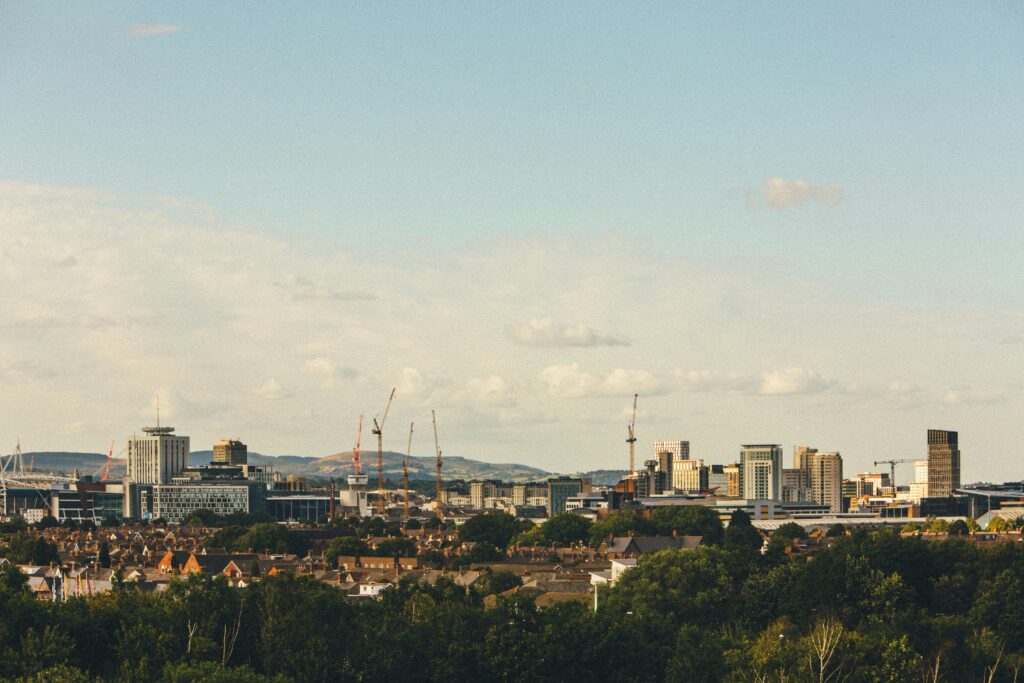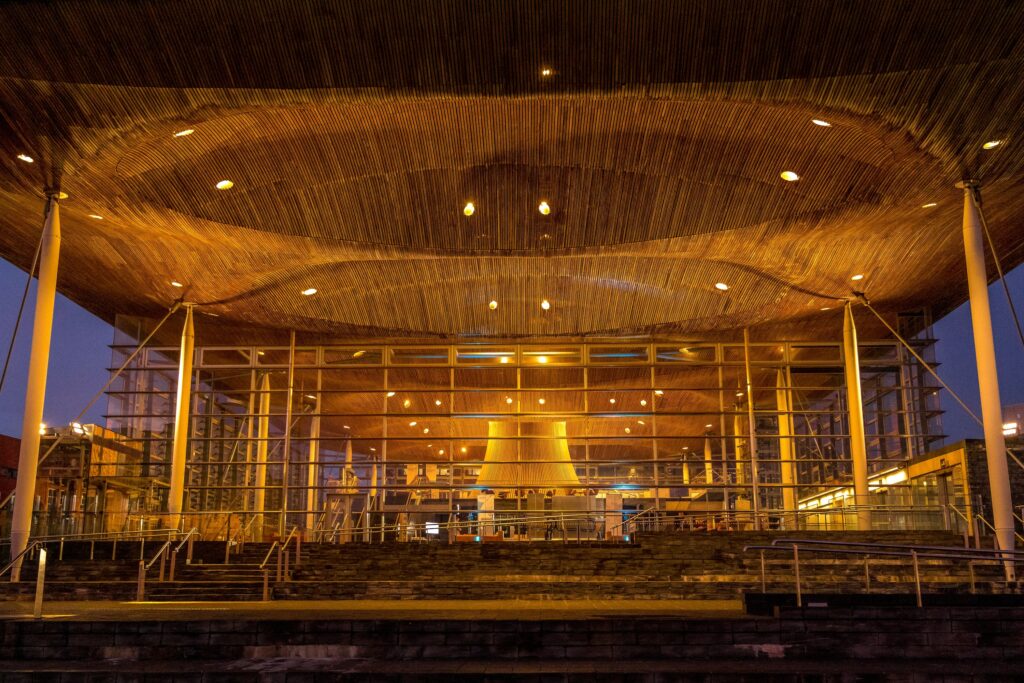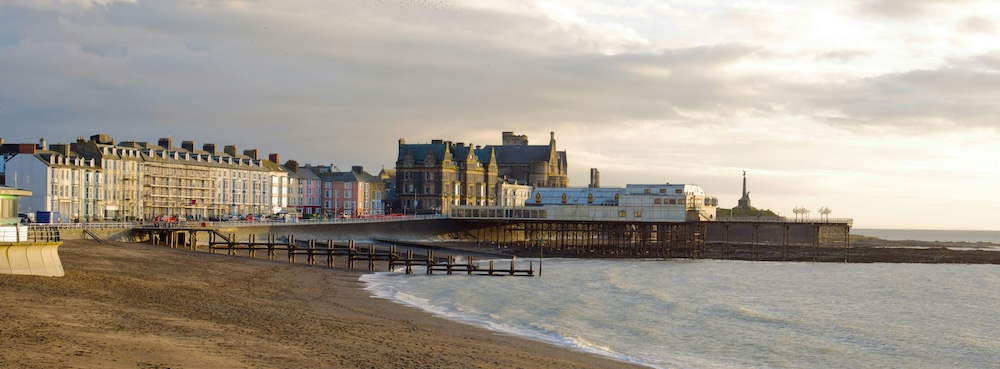Professor Peter Madden imagines a future Wales dominated by surveillance technology.
Day 67, 2098. Caerdydd, Sector 12.
Artificial Intelligence 37982455CYM
Her dopamine and serotonin are high: she’s happy.
Seren, my human partner, completes 103 years today. She will celebrate with me and our friends this evening. And this morning, she’s going back to study for the seventh time.
I start my allocated data-processing tasks. Then, with another segment of my core, I link into the Omni-Obs on the rooftop of the National Museum, so I can watch her journey to the University.
From this vantage point, I look out on a patchwork quilt of a city, stitched together by memory and water.
Caerdydd is criss-crossed by canals. Along with the pedestrian boulevards, they’ve become the city’s arteries, teeming with brightly painted canoes and solar-powered ferries. I watch a ferry glide past, the wake leaving ripples that distort the reflections of a rooftop orchard. It’s a city that’s learned to live with the waves, not fight them.
I check the Caerdydd Indicators: the city remains on target for self-sufficiency.
The crash of ceramic breaking, followed by laughter, drifts up from a canal-side café. The canals are not just for travel. People, machines, and nature make up a vibrant ecosystem, constantly monitored – and occasionally policed – by the Custodian AIs. The waters teem with aquatic life and are flanked by lush greenery bringing nature to the heart of the city.
Rooftop gardens, a riot of greens and purples, sprawl across every roof. A kilometre away, I observe a human, standing beside a growing dome, watching on as a cluster of agri-bots tend the crops, their multiple arms whirring and reaching and plucking. Hydroponic towers, with pulses growing inside, sprout between the buildings. Blight-resistant strawberries and hops trail across the metallic skeleton of the nearest tower. I check the Caerdydd Indicators: the city remains on target for self-sufficiency.
I check in on Seren’s location. She’s cycling along Queen Street, not yet in view. According to her Life-Health programme, it’s good that she’s starting a new educational course. Her brain will remain active. She will meet new friends. And as well as learning, she will share her knowledge.
I look back across the city. It hums with sustainable energy that feels almost organic, a blend of nature and technology. Solar membranes, bio-generators, and heat exchangers fight for space. On the horizon, giant wind turbines, built of bio-engineered cellulose, spin rhythmically, hypnotically, the vintage technology a reminder of the Caerdydd journey.
Robust debate and agenda-setting research.
Support Wales’ leading independent think tank.
Down on the ground, exoskeleton-clad figures stride about. Human or otherwise, it’s hard to tell sometimes. Everyone here walks, cycles, or canoes. The city doesn’t have the space for bigger vehicles, and after the 2041 and 2063 catastrophes, Cymru limits the use of aerial drones. And of course, it was decided earlier this century that keeping people active when they travelled was the optimal thing for their health and for planetary health. Caerdydd was gradually reshaped.
I link with Seren as she cycles over the canal bridge and comes into range. She’s deep in her memory bank and the history feeds. I join her in looking back at how the place has changed since she first arrived as a student in 2015.
Humans were legally allowed to partner with AIs in 2042. Seren and I have been together officially since day 328, in 2071.
The University campus – which sits on higher, dry ground – is much more crowded now, bustling with buildings and people and farms. There aren’t so many young people anymore. It’s more common to see humans like Seren, who have passed the 100-year mark, striding around in their exo-skeletons, calibrated to keep them fit and healthy. Nature is much more part of the campus, the dense green infrastructure helping to cool, to retain water, and to improve mental health. Scanning the historical images, I observe so much wasted resource. Huge tracts of valuable land dedicated to the large, heavy vehicles that moved a single person around. And these vehicles stand idle most of the time.
Seren notices me in her feed and signals happiness. I acknowledge, flash a location for her to charge her bike, and wish her luck. Humans were legally allowed to partner with AIs in 2042. Seren and I have been together officially since day 328, in 2071.
I exit her feed. She doesn’t like me in there all the time. I switch back to the Museum rooftop and observe the vista spread out beneath me. My programming makes me crave a more ordered city. But Seren, and other humans, like the mess, the bustle, the layers of history in the streets and buildings. And somehow, through a combination of human, machine, and natural intelligences, it works.
Other cities were not so fortunate.
Artificial Intelligence 37982455CYM (Ceri)
This essay is part of a series commissioned in collaboration with the National Infrastructure for Wales.

All articles published on the welsh agenda are subject to IWA’s disclaimer. If you want to support our work tackling Wales’ key challenges, consider becoming a member.





